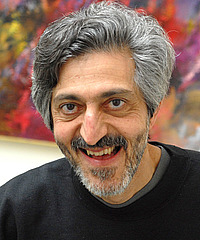Guest post by Martin Bullinger
Very recently, Vijay Vazirani's paper A Theory of Alternating Paths and Blossoms, from the Perspective of Minimum Length got accepted to Mathematics of Operations Research. For the first time, it gives a complete and correct proof that the Micali-Vazirani algorithm finds a maximum cardinality matching in time \(\mathcal O\left(m\sqrt{n}\right)\). I would like to give an account of the extraordinary story of this proof and how Vazirani's contribution inspires persistence.My fascination for matching already started during my undergrad when I gave a talk on Edmonds' blossom algorithm. It was at this time that I first heard about the Micali-Vazirani (MV) algorithm. Naturally, I was quite excited when I got to know Vazirani personally years later. When I talked to him about the MV algorithm I was, however, shocked: Vazirani admitted that even to that day, there did not exist a complete proof of its correctness. How can a theoretical result be accepted to FOCS without a proof?
Now, 44 years after publication of the algorithm, a proof exists and has been peer-reviewed in great depth. But why did it take so long? Apparently, some results just need time. Sometimes a lot of time. Think of Fermat's Last Theorem, whose proof took 358 years! So what is the story behind the MV algorithm? It can without a doubt be seen as a lifework. Together with his fellow PhD student Silvio Micali, Vazirani discovered it in the first year of his PhD in 1979-80. Without even attempting a proof, it was published in the proceedings of FOCS 1980. The first proof attempt by Vazirani was published in 1994 in Combinatorica. Unfortunately, this proof turned out to be flawed. It took another 30 years until his current paper.
What kept Vazirani going for so long? In the acknowledgements of his paper, he thanks matching theory for its gloriously elegant structure. Vazirani was driven by his passion for the subject matter---but passion by itself can only go so far. Even more important was his belief in the correctness of the algorithm and the theory, which he had broadly outlined in his 1994 paper. Similar to Andrew Wiles' story, his perseverance led him to the idea which clinched the proof. In Vazirani's case, this was to use the new algorithmic idea of double depth-first search, which forms the core of the MV algorithm, and now, its proof as well. But Vazirani's result is also the story of an excellent research environment. Finding deep results requires colleagues or friends to discuss ideas with. Vazirani had these in the form of strong postdocs and PhD students. About ten years ago, he had been discussing ideas towards his proof with his former postdoc Ruta Mehta, and in the last three years, he discussed the final touches of his proof with his current PhD student Rohith Gangam. Needless to say, both of them gained a lot from these discussions.
So why should we care for the MV algorithm? I have several reasons. First, without doubt, it is a historic result within combinatorial optimization. Matching is one of the most fundamental objects in discrete mathematics and we keep finding new applications for it, for example, in health, labor markets, and modern day matching markets on the Internet, basically in every part of our lives. But there is more. Once again, one can look at Vazirani's paper where he describes the impact of matching to the development of the theory of algorithms: Matching theory has led to foundational concepts like the definition of the complexity classes \(\mathcal P\) (Edmonds, 1965a) and \(\# \mathcal P\) (Valiant, 1979), the primal-dual paradigm (Kuhn, 1955), and polyhedral combinatorics (Edmonds, 1965b). The impact of matching on complexity theory was an earlier topic of this blog.
Despite being around for decades, the MV algorithm is still the fastest known algorithm for computing a maximum cardinality matching. This is surprising, to put it mildly. Similar to many other fundamental problems in combinatorial optimization, I would have expected the discovery of better algorithms in the last four decades. Why has this not happened? Vazirani appears to have gotten to the essence of the problem: a profound theory that interleaves algorithmic invariants and graph-theoretic concepts. It seems to be the kind of theory which would play an active role in the field of combinatorial optimization.
However, Vazirani's result proves something else, possibly even more important: the massive gains to be made by single-minded persistence. In a world in which departments and promotion procedures focus on publishing large numbers of papers, it seems impossible to work on one result for more than a year, let alone for decades. Vazirani managed to achieve both: pursue his passion and get the unfinished job done, but not let it come in the way of the rest of his otherwise-active research career. As a young researcher, this inspires me! In the end, it is through such persistence that science will take big steps forward.
This blog post evolved from many enjoyable discussions, which I had with Vijay Vazirani during a research stay at UC Irvine in spring 2024. I am grateful to Ruta Mehta for feedback on the initial version of this post. Vazirani recently presented his paper in a mini series of two talks available online.


